In the vast theater of the sky, one predator reigns supreme when it comes to raw speed and hunting precision. The peregrine falcon, nature’s perfect aerial assassin, can reach diving speeds of over 200 miles per hour during its legendary hunting stoop. This remarkable feat makes it not only the fastest bird but the fastest animal on the planet. What enables these magnificent raptors to achieve such extraordinary velocities is not muscular power alone, but rather an ingenious exploitation of Earth’s most fundamental force: gravity. Through millions of years of evolution, peregrine falcons have developed specialized adaptations that transform their bodies into aerodynamic missiles, allowing them to harness gravity’s pull with unparalleled efficiency. Their hunting technique combines physics, precision, and split-second timing in one of nature’s most spectacular displays of predatory prowess.
The Evolutionary Marvel of Peregrine Falcons

Peregrine falcons (Falco peregrinus) have evolved over millions of years to become the perfect high-speed aerial predators. Their name “peregrinus” appropriately means “wanderer” in Latin, reflecting their status as one of the most widespread bird species on Earth, found on every continent except Antarctica. Throughout their evolutionary history, these birds have developed specialized adaptations specifically suited for high-speed hunting, with fossil records showing recognizable peregrine ancestors dating back approximately 35 million years. Their remarkable hunting strategy—diving from great heights to strike prey in mid-air—represents one of nature’s most refined predatory techniques, honed through countless generations of natural selection. This evolutionary path has created a bird so perfectly adapted to its ecological niche that its basic hunting strategy has remained largely unchanged for millennia, even as the species has diversified into numerous subspecies across different global habitats.
Anatomy of Speed: The Falcon’s Aerodynamic Design
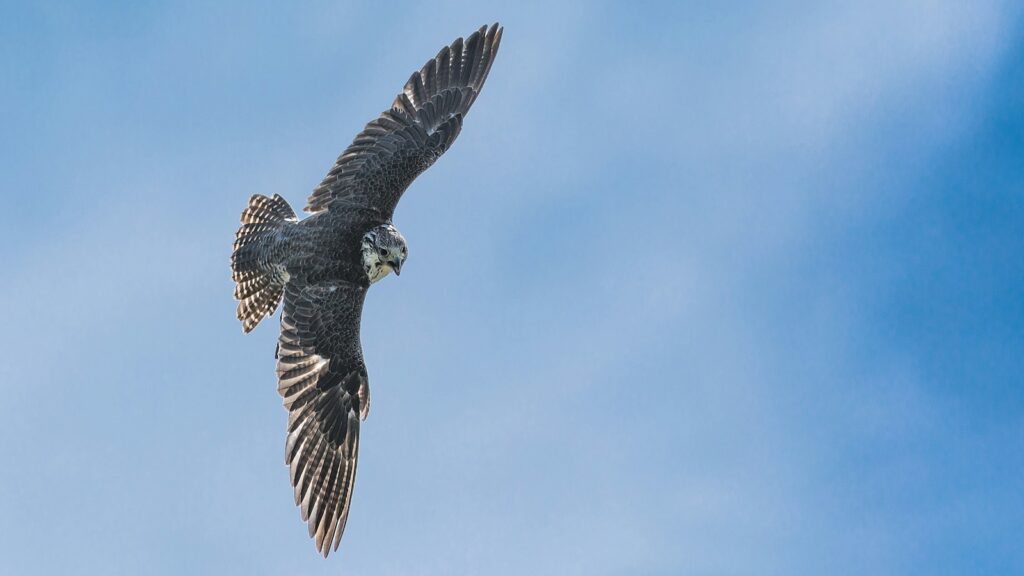
Peregrine falcons possess a suite of anatomical features specifically evolved for high-speed flight and diving. Their streamlined body shape minimizes air resistance, with a tapered tail and compact, powerful build that creates an exceptionally efficient aerodynamic profile. The falcon’s wings are uniquely designed with pointed tips and a swept-back shape that can be adjusted during the dive, allowing the bird to control its descent with remarkable precision. Perhaps most distinctive are the specialized tubercles (small bumps) in their nostrils that baffle and slow the incoming air during high-speed dives, preventing potential damage to sensitive respiratory tissues and allowing the bird to breathe normally even at extreme velocities. Additionally, their dense, smooth feathers create a surface that minimizes turbulence as air flows over the body, further enhancing their aerodynamic efficiency during their spectacular hunting stoops.
The Physics Behind the Falcon’s Stoop

The peregrine falcon’s hunting dive, known as a stoop, is a masterclass in applied physics. When initiating a stoop, the falcon converts potential energy (gained by climbing to heights of up to 3,000 feet) into kinetic energy as it descends, effectively transforming altitude into velocity. Unlike powered flight where energy expenditure increases with speed, the stoop allows the falcon to achieve extraordinary velocities while expending minimal muscular energy, letting gravity do most of the work. During the dive, the falcon positions its body to balance two competing factors: maximizing acceleration by reducing air resistance, while maintaining enough lift and control to accurately target moving prey. As the bird accelerates, it must also contend with increasing drag forces that would normally limit terminal velocity, but its specialized adaptations allow it to minimize these effects. The falcon’s ability to maintain control while experiencing forces that would render most other birds unconscious demonstrates the remarkable specialization of this hunting technique.
Reaching Terminal Velocity: How Fast Do Falcons Really Go?
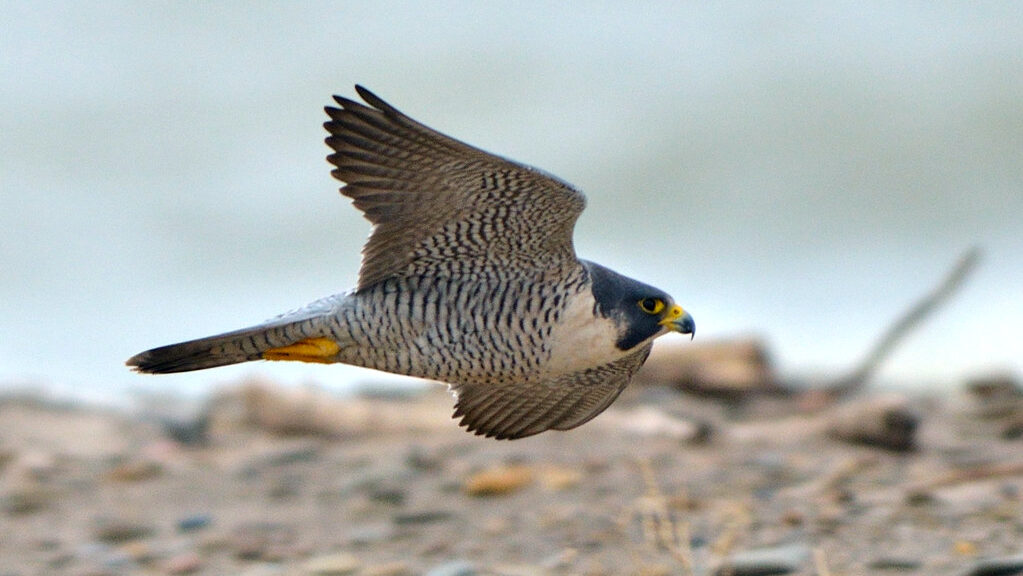
The peregrine falcon’s diving speed has been the subject of extensive scientific study, with modern tracking technology confirming their status as the world’s fastest animals. The highest reliably documented speed was recorded in 2005, when a peregrine falcon named “Frightful” was clocked at 242 mph (389 km/h) during a controlled diving experiment, though typical hunting stoops generally reach 150-200 mph (240-320 km/h). These speeds approach the theoretical terminal velocity for the falcon’s body shape and mass, representing the maximum speed attainable when acceleration due to gravity is perfectly balanced by air resistance. At such velocities, the falcon experiences forces exceeding 25 G’s—far beyond what human fighter pilots can endure without specialized equipment. What makes these speeds even more impressive is that the falcon maintains complete control throughout the dive, able to make split-second adjustments to intercept prey that may itself be performing evasive maneuvers.
The Hunting Stoop: A Multi-Phase Aerial Attack
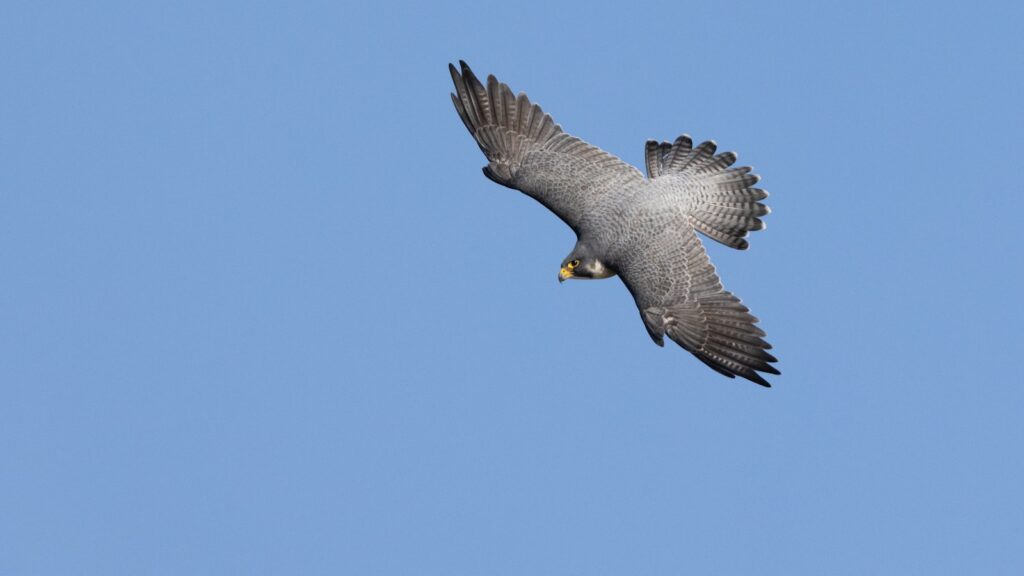
The peregrine’s hunting stoop consists of several distinct phases, each requiring precise execution for a successful hunt. Initially, the falcon gains altitude through powered flight, sometimes soaring on thermal currents to conserve energy while climbing to heights of 1,000-3,000 feet above potential prey. From this vantage point, the falcon’s exceptional vision allows it to spot suitable targets—typically medium-sized birds—from remarkable distances. Upon selecting a target, the falcon begins its initial descent, folding its wings partially against its body while maintaining a shallow angle to build speed gradually. As the stoop progresses, the falcon tucks its wings more tightly and steepens its angle of descent, entering the maximum acceleration phase where speeds rapidly increase to over 200 mph. In the final approach, the falcon makes minute adjustments to its trajectory, extending its talons just before impact and sometimes performing a slight pull-up maneuver to match the target’s speed and direction precisely at the moment of strike.
Visual Targeting Systems: Precision at Incredible Speeds
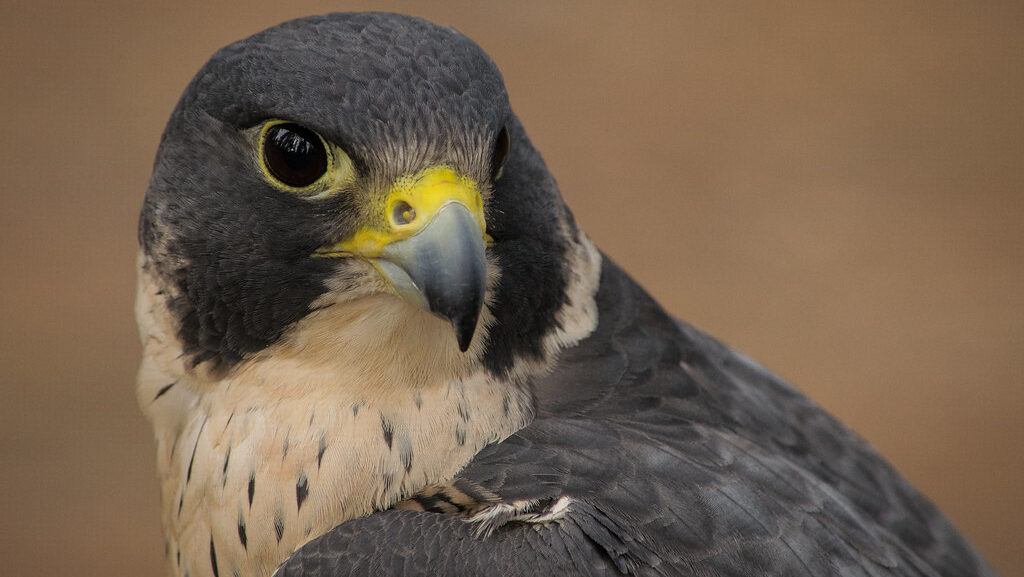
Peregrine falcons possess one of the most sophisticated visual systems in the animal kingdom, crucial for their high-speed hunting technique. Their eyes account for approximately 15% of their head weight (compared to about 1% in humans), with visual acuity estimated to be 2.6 times sharper than human vision. This exceptional eyesight allows them to spot prey from distances exceeding a mile away and maintain visual lock during dives where relative speeds create enormous challenges for accurate targeting. The falcon’s visual system also processes images much faster than human eyes—estimated at over 100 frames per second compared to the 60 frames humans can process—preventing motion blur during high-speed pursuits. Additionally, specialized foveal regions in their retinas enhance central vision while maintaining good peripheral awareness, and protective nictitating membranes (transparent eyelids) shield their eyes during high-speed dives without compromising visibility. This combination of visual adaptations enables the falcon to calculate and continuously adjust complex intercept trajectories while traveling at speeds that would render most other animals effectively blind.
The Killing Strike: The Moment of Impact
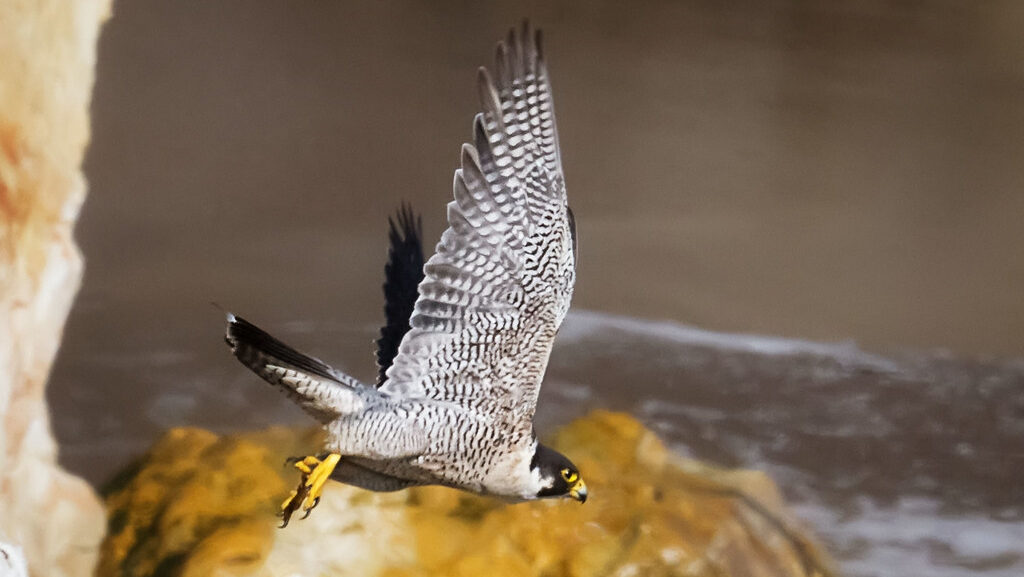
The culmination of the peregrine falcon’s hunting stoop is the strike itself—an event occurring so rapidly that it was poorly understood until high-speed photography revealed its mechanics. Rather than simply colliding with prey, the falcon executes a precisely timed maneuver where it clenches its foot into a fist-like weapon called the “killing claw” or “tomial tooth.” This specialized talon delivers a concentrated impact to critical areas of the prey, typically the neck or head, generating forces that can exceed 25 times the acceleration due to gravity. The impact typically causes immediate death or unconsciousness in the prey through severe trauma to the central nervous system, with some studies indicating that the force generated is equivalent to the prey being hit by a bowling ball traveling at 60 mph. Remarkably, the falcon can execute this precision strike while both predator and prey are in motion, sometimes performing last-second adjustments to account for evasive maneuvers. In cases where the initial strike doesn’t kill the prey outright, the falcon’s specialized beak with its notched “tomial tooth” is used to sever the spinal cord in a swift follow-up attack.
Withstanding the G-Forces: Physiological Adaptations
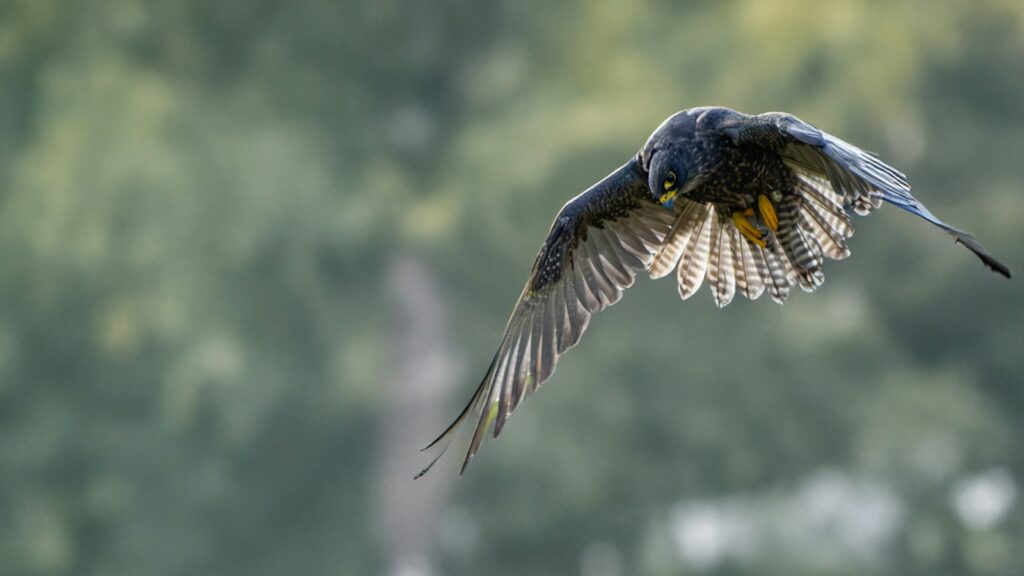
The extreme speeds of the peregrine falcon’s hunting stoop subject the bird to physiological stresses that would incapacitate most other creatures, including humans. During the pull-out phase that follows a strike, falcons can experience forces exceeding 25 G’s—far beyond the 9 G limit where human fighter pilots risk losing consciousness without specialized pressure suits. Peregrine falcons have evolved several adaptations to withstand these forces, including reinforced blood vessels in the brain that resist rupturing under pressure and specialized capillary networks that help maintain blood flow to critical organs even during extreme acceleration. Their cardiovascular system features adaptations that prevent blood from pooling away from the brain during high-G maneuvers, effectively serving as a natural anti-G suit. Additionally, the falcon’s cerebral spinal fluid provides enhanced cushioning for the brain, while the positioning of major blood vessels reduces their vulnerability to pressure changes during rapid acceleration and deceleration. These physiological adaptations allow the falcon to maintain consciousness and control throughout maneuvers that represent the outer limits of what biological systems can withstand.
Air Flow Management: Breathing at 200 MPH
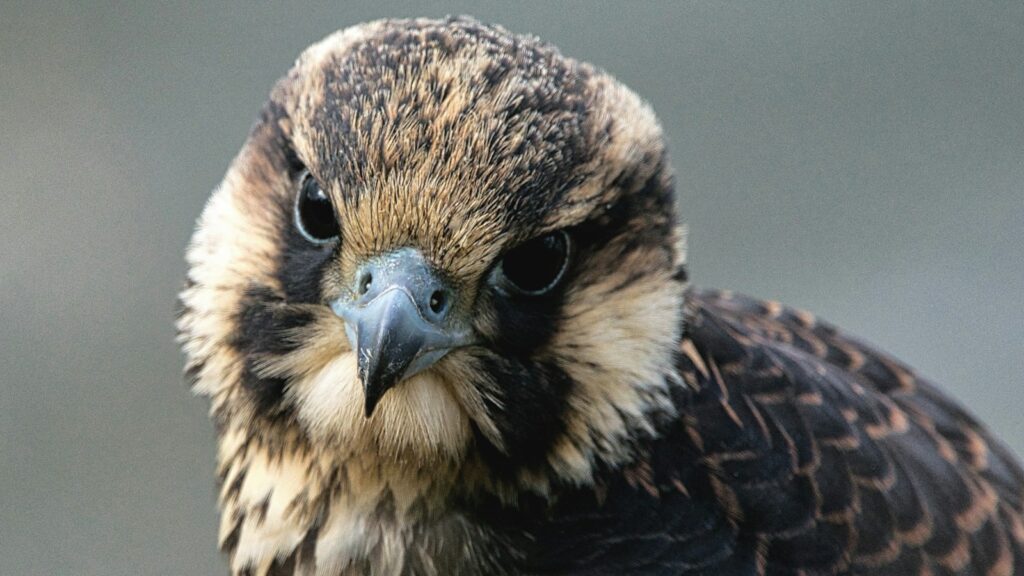
One of the most remarkable adaptations of the peregrine falcon is its ability to breathe normally while diving at speeds exceeding 200 mph—a feat that would be impossible without specialized respiratory adaptations. The falcon’s nostrils, called nares, contain small bony structures called tubercles that create a baffle system, effectively managing the tremendous air pressure generated during high-speed dives. These tubercles disrupt and slow the incoming airflow, creating small areas of lower pressure that allow the bird to breathe without damaging its sensitive respiratory tissues. Additionally, specialized air sacs connected to the lungs help regulate pressure throughout the respiratory system during rapid pressure changes. The falcon’s trachea is also reinforced to prevent collapse under the extreme pressure differential experienced during dives, while its unique lung structure allows for continuous flow of oxygen even during the most demanding phases of the hunt. Together, these adaptations solve one of the most challenging aspects of high-speed diving: how to continue breathing efficiently while facing air pressure that would normally make inhalation physiologically impossible.
Learning to Dive: How Young Falcons Master the Stoop

The peregrine falcon’s spectacular hunting dive is not purely instinctual but involves a complex learning process as juvenile birds develop their hunting skills. Young falcons begin practicing diving behaviors around six weeks of age, initially performing shallow, low-speed stoops that gradually increase in steepness and velocity as they gain experience and confidence. Parent birds play a crucial role in this learning process, with adult falcons demonstrating proper diving techniques that the juveniles observe and imitate. Research has shown that young falcons go through distinct learning phases, beginning with basic diving mechanics before progressing to more complex skills like precision targeting and the specialized strike technique. During this apprenticeship period, which can last 3-4 months, success rates for hunting attempts gradually improve from less than 10% initially to the 70-80% success rate typical of experienced adult birds. This extended learning period highlights the sophisticated nature of the falcon’s hunting technique, which represents not just evolutionary adaptation but also the transmission of learned behaviors that are refined through practice and experience.
Comparing Falcon Speeds to Human Technology

The peregrine falcon’s diving speed of over 200 mph places it in rarefied company even when compared to human technological achievements. A diving peregrine moves faster than many small aircraft, exceeds the top speed of most high-performance sports cars, and approaches the speed of Formula 1 race cars (which typically reach 220-230 mph). However, what makes the falcon’s achievement particularly remarkable is the precision control maintained at these velocities without any artificial stabilization systems. While human skydivers typically reach terminal velocities of about 120 mph in standard position, specially equipped skydivers in maximum-speed configuration have reached just over 300 mph—only about 50% faster than the falcon achieves using only its natural body. Perhaps most impressively, the falcon’s diving technique remains more energy-efficient than any human-designed aircraft performing similar maneuvers, with studies indicating that falcons use approximately 80% less energy during their hunting stoops than they would attempting to achieve similar speeds through powered flight. This comparison highlights how millions of years of evolutionary refinement have created a biological system that still surpasses many aspects of human engineering despite our technological advantages.
Conservation Success: Saving the Fastest Bird on Earth

The peregrine falcon stands as one of conservation’s greatest success stories, having recovered from the brink of extinction in many regions during the mid-20th century. The widespread use of DDT and other organochlorine pesticides beginning in the 1940s caused catastrophic population declines, with the chemicals accumulating in the falcons’ bodies and causing eggshell thinning that resulted in reproductive failure. By the 1960s, peregrine populations had crashed by more than 90% in some areas, with the species disappearing entirely from the eastern United States. Following the ban of DDT in the United States in 1972 and subsequent international restrictions, an ambitious recovery program was launched, combining habitat protection with an innovative captive breeding and release program. Conservationists developed specialized techniques for breeding peregrines in captivity and releasing them through a process called “hacking,” where young birds were placed in artificial nest sites in suitable habitat. These efforts proved remarkably successful, with peregrine populations rebounding dramatically—from just 324 known breeding pairs in the United States in 1975 to over 3,000 pairs today, leading to the species’ removal from the U.S. Endangered Species List in 1999.
Urban Adaptations: Falcons in Modern Environments
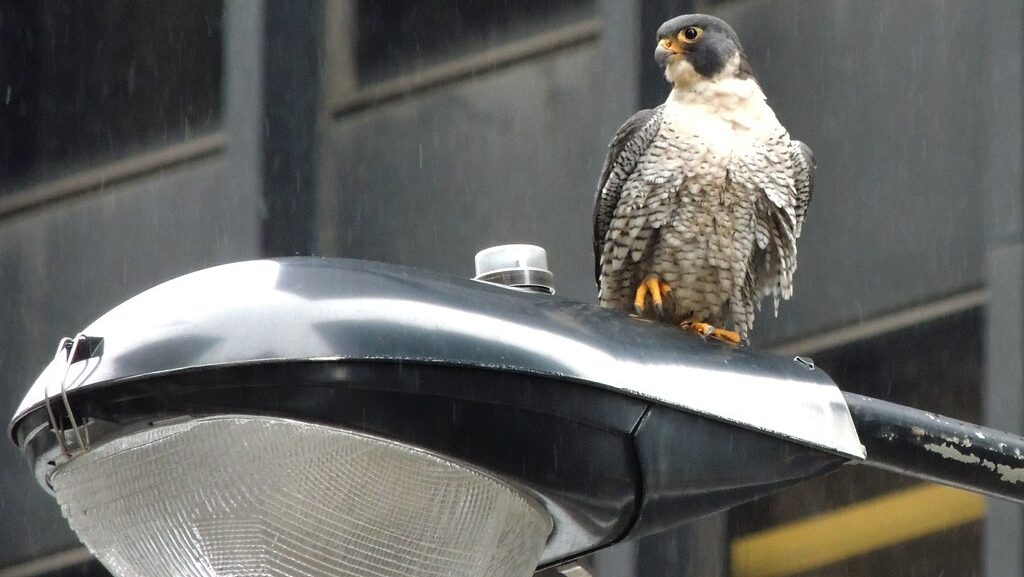
One of the most fascinating aspects of peregrine falcon ecology is their successful adaptation to urban environments, where they have found suitable substitutes for their traditional cliff-side nesting habitats. Skyscrapers, bridges, and other tall structures mimic the cliff faces that peregrines naturally prefer, providing secure nesting sites with commanding views of surrounding areas. Cities also offer abundant prey in the form of pigeons, starlings, and other urban birds, creating a year-round food supply that has allowed some peregrine populations to become non-migratory in urban settings. Many major cities worldwide now host resident peregrine falcons, with some metropolitan areas like New York and Chicago supporting multiple breeding pairs that have become local celebrities through webcams and conservation programs. Urban peregrines have even demonstrated behavioral adaptations to city life, including night hunting using artificial lighting and specialized techniques for navigating through complex cityscapes during high-speed pursuits. This successful urban colonization represents an unexpected conservation triumph, with cities now serving as important habitat for a species that once faced extinction—a rare example of a wild predator thriving amid human development rather than being displaced by it.
Future Research: Unraveling More Falcon Secrets
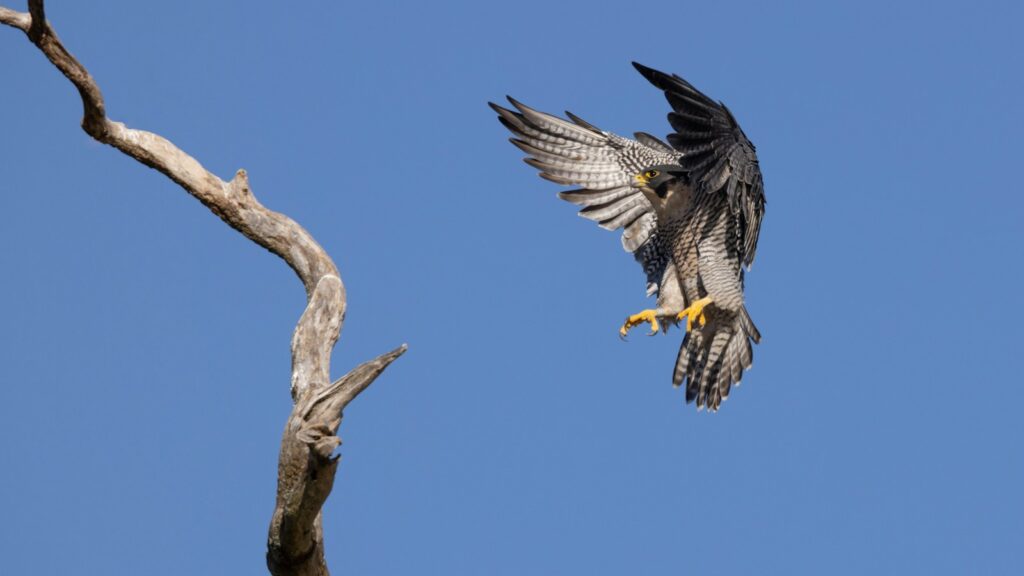
Despite centuries of observation and decades of scientific study, researchers continue to discover new aspects of the peregrine falcon’s remarkable diving abilities. Current research focuses on several cutting-edge areas, including detailed fluid dynamics modeling of airflow around the falcon’s body during dives, which may reveal additional subtle adaptations that enhance aerodynamic efficiency. Miniaturized GPS and accelerometer technology now allows researchers to collect precise data on wild falcons’ three-dimensional flight paths and acceleration profiles during natural hunting behavior, providing insights previously impossible to obtain. Neurobiological studies are examining how the falcon’s brain processes visual information at high speeds, with potential applications for improving computer vision systems in high-speed applications like autonomous vehicles. Biomechanical engineers are also studying the falcon’s wing morphology and control surfaces to develop improved designs for aircraft and drones, particularly those requiring high-speed maneuverability. As technology advances, we can expect even more discoveries about these remarkable birds, potentially revealing additional adaptations and capabilities that have thus far escaped human observation despite our long fascination with these aerial predators.
Conclusion
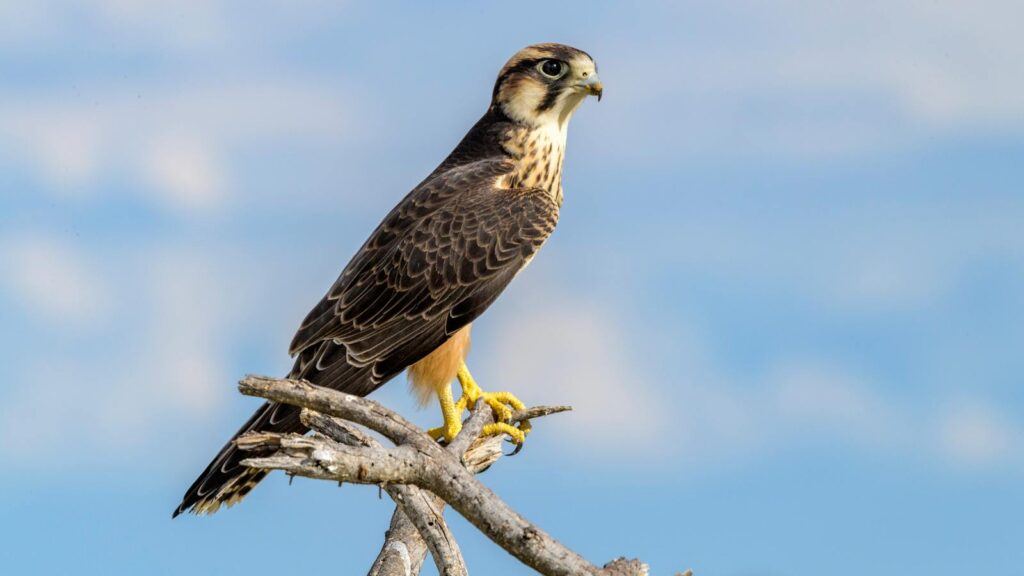
The peregrine falcon’s ability to strike at speeds approaching 200 mph represents one of nature’s most perfect marriages of form and function—a masterpiece of evolutionary adaptation that transforms a two-pound bird into the fastest animal on Earth. By harnessing gravity’s pull through specialized adaptations refined over millions of years, these remarkable predators achieve speeds that would require enormous energy expenditure through powered flight alone. Their hunting stoop combines principles of physics, aerodynamics, and precision control in a display that continues to inspire human admiration and scientific inquiry. As we continue to study these magnificent birds, they offer not only insights into the outer limits of biological performance but also powerful conservation lessons about nature’s resilience when given the opportunity to recover. The peregrine falcon’s comeback from near-extinction to urban adaptation demonstrates that even species with highly specialized requirements can thrive alongside human civilization when we make
